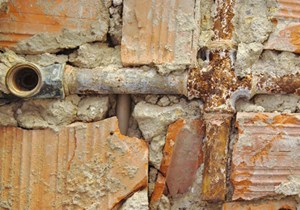Connecticut governor commends $53 million award from EPA to improve water infrastructure
(UC) — Governor Ned Lamont applauded the U.S. Environmental Protection Agency’s (EPA) announcement that Connecticut would receive over $53 million in funding from President Joe Biden’s Bipartisan Infrastructure Law for water infrastructure improvements.
The Bipartisan Infrastructure Law allocated more than $50 billion to the EPA toward repairing the nation’s essential water infrastructure, which helps communities access clean, safe and reliable drinking water, increase resilience, collect and treat wastewater to protect public health, clean up pollution, and safeguard vital waterways. The grant marks the first significant distribution of water infrastructure funds thanks to the Bipartisan Infrastructure Law.
The state plans to use the funding for lead line replacement projects in New London and Waterbury, as well as PFAS treatment projects in New Fairfield and Danbury. A host of other projects are slated for funding in the state through the Bipartisan Infrastructure Law, which will significantly increase the ability of towns and cities to meet their infrastructure needs.
“Clean drinking water is a right, not a privilege,” Governor Lamont said. “Thanks to President Biden’s Bipartisan Infrastructure Law and the work of our amazing Congressional delegation, we’re not only making commutes faster and safer, we’re also improving the health and wellness of our children and families. Whether our residents live in one of Connecticut’s smallest towns or its biggest cities, they’ll have the opportunity to benefit from this once-in-a-generation investment.”
The EPA’s State Revolving Funds (SRFs) are part of President Biden’s Justice40 initiative, which aims to deliver at least 40% of the benefits from certain federal programs flow to underserved communities. Furthermore, nearly half the funding available through the SRFs thanks to the Bipartisan Infrastructure Law must be grants or principal forgiveness loans that remove barriers to investing in essential water infrastructure in underserved communities across rural America and in urban centers.
In fiscal year 2022, the six New England states have received a total of $484,744,421 with nearly half of this funding available as grants or principal forgiveness loans that remove barriers to investing in essential water infrastructure in underserved communities across rural America and in urban centers.
The fiscal year 2022 allocation is the first of five years of $43 billion in dedicated EPA SRF funding that states will receive through the Bipartisan Infrastructure Law. For more than 30 years, the SRFs have been the foundation of water infrastructure investments, providing low-cost financing for local projects across America.
However, many vulnerable communities facing water challenges have not received their fair share of federal water infrastructure funding. Under the Bipartisan Infrastructure Law, states have a unique opportunity to correct this disparity.
Capitalization grants will continue to be awarded, on a rolling state-by-state basis, as more states receive approval throughout fiscal year 2022. States will also receive awards over the course of the next four years. As grants are awarded, the state SRF programs can begin to distribute the funds as grants and loans to communities across their state.
Related News
From Archive

- Glenfarne Alaska LNG targets late-2026 construction start for 807-mile pipeline project
- U.S. water reuse boom to fuel $47 billion in infrastructure spending through 2035
- $2.3 billion approved to construct 236-mile Texas-to-Gulf gas pipeline
- Major water pipe break in Puerto Rico hits over 165,000 customers
- Potomac River Tunnel project enters construction phase beneath Washington, D.C.
- Pennsylvania American Water launches interactive map to identify, replace lead water service lines
- Trump's tariffs drive $33 million cost increase for Cincinnati sewer project
- Utah city launches historic $70 million tunnel project using box jacking under active rail line
- Tulsa residents warned after sewer lines damaged by boring work
- Fatal trench collapse halts sewer construction in Massachusetts; two workers hospitalized




Comments